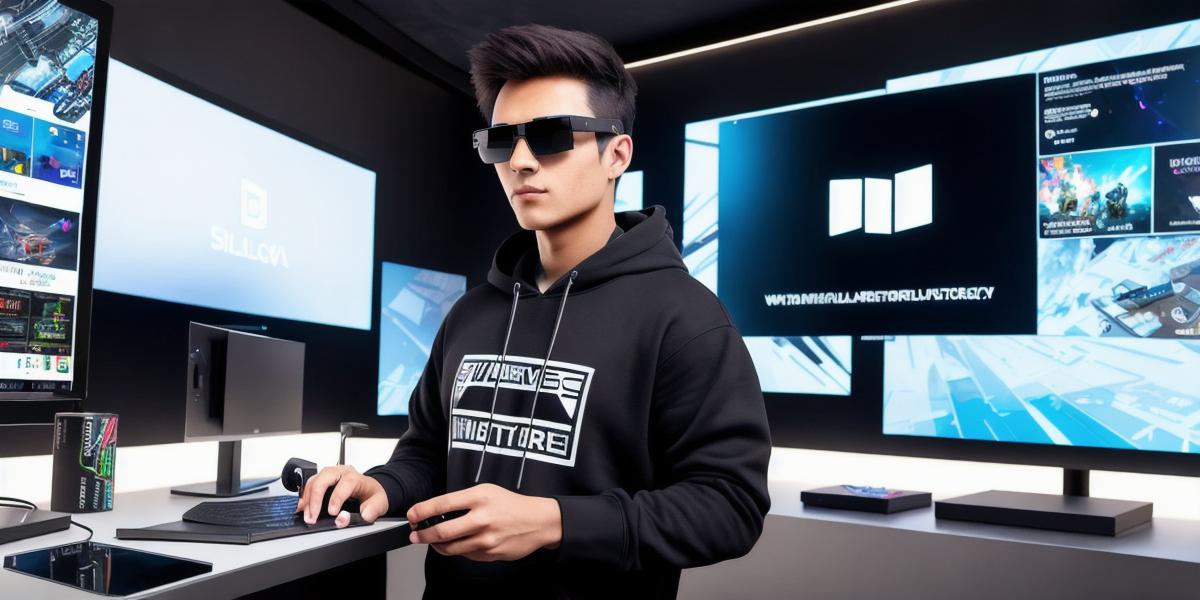Title: Revolutionizing Gaming with Cryptocurrency Infrastructure: A Comprehensive Guide for Blockchain Game Developers
As gaming continues to evolve, the integration of cryptocurrency infrastructure has become increasingly important for game developers looking to create immersive and innovative gaming experiences. From NFTs to decentralized finance (DeFi) tools, cryptocurrencies have opened up new possibilities for gamification, monetization, and ownership.
In this article, we will explore the various ways in which cryptocurrency infrastructure is revolutionizing gaming and provide practical guidance on how blockchain game developers can leverage these technologies to create more engaging and profitable games. We will also discuss the key challenges and risks associated with integrating cryptocurrencies into gaming and offer expert insights from industry experts.
1. Introduction: What is Cryptocurrency Infrastructure in Gaming?
Cryptocurrency infrastructure refers to the various technologies and platforms that enable the use of cryptocurrencies in gaming. These include blockchain networks, NFTs, DeFi tools, wallets, and exchanges.
By integrating these technologies into their games, developers can create new revenue streams, enhance player engagement, and foster a sense of ownership among players. Additionally, cryptocurrency infrastructure can enable games to be played across multiple platforms, making them more accessible to a wider audience.

- The Rise of NFTs in Gaming
NFTs (non-fungible tokens) are digital assets that are unique and cannot be exchanged for other items of equal value. In gaming, NFTs can be used to represent in-game items, such as characters, weapons, and collectibles. This allows players to own and trade these items as if they were physical collectibles, creating a new market for digital goods.
One example of the use of NFTs in gaming is CryptoKitties, a blockchain game that allows players to breed and sell unique cats as NFTs. Another example is NBA Top Shot, a basketball-themed NFT game that enables fans to collect and trade moments from past NBA games.
- DeFi Tools in Gaming: Opportunities and Challenges
DeFi (decentralized finance) tools are financial applications built on blockchain networks that allow users to access a range of financial services without the need for intermediaries such as banks or payment processors. These tools can be integrated into games to enable players to earn, spend, and invest cryptocurrencies within the game ecosystem.
One example of DeFi in gaming is CryptoSpace, a blockchain-based space trading game that allows players to use DeFi tools to trade in-game assets and earn rewards. However, integrating DeFi into games also presents challenges, such as the need for users to have a strong understanding of cryptocurrencies and financial markets.
1. Case Studies: Successful Integration of Cryptocurrency Infrastructure in Gaming
There are several successful examples of blockchain game developers integrating cryptocurrency infrastructure into their games. One example is Decentraland, a virtual reality platform that allows users to create and interact with 3D content on a blockchain network. Decentraland uses its own cryptocurrency, MANA, which can be used to buy and sell in-game assets and participate in governance decisions.
Another example is Dfinity, a blockchain platform that enables developers to create and deploy decentralized applications (dApps) on a global network of nodes. Dfinity has partnered with several gaming companies, including Ubisoft and Atari, to enable the integration of cryptocurrency infrastructure into their games.
1. Expert Insights: What Blockchain Game Developers Need to Know
To successfully integrate cryptocurrency infrastructure into their games, blockchain game developers need to be aware of several key factors. These include:
- Security: Cryptocurrencies are highly valuable, and any security breaches or hacking attempts could result in significant financial losses for both the developer and the players. Developers must ensure that their games are secure and that player data is protected.
- User Experience: Integrating cryptocurrency infrastructure into a game can be complex and confusing for players, especially those who are new to cryptocurrencies. Developers must provide clear and concise instructions on how to use these technologies and ensure that the user experience remains seamless and intuitive.
- Regulations: The legal status of cryptocurrencies varies widely around the world, and developers must be aware of any regulations or restrictions that may apply in their jurisdiction.
1. Conclusion: Revolutionizing Gaming with Cryptocurrency Infrastructure
In conclusion, cryptocurrency infrastructure is revolutionizing gaming by enabling new revenue streams, enhancing player engagement, and fostering a sense of ownership among players. By leveraging these technologies, blockchain game developers can create more immersive and innovative gaming experiences that resonate with their target audiences. However, developers must also be aware of the key challenges and risks associated with integrating cryptocurrencies into gaming and take steps to mitigate these factors. With careful planning and execution, cryptocurrency infrastructure has the potential to transform the gaming industry and create new opportunities for players and developers alike.
FAQs:
- What is blockchain technology?
- How do NFTs work in gaming?
- What are DeFi tools in gaming?
- Is there any risk involved in integrating cryptocurrencies into gaming?
